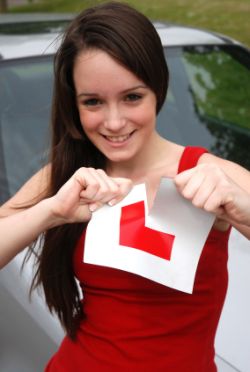Hazard Perception
There has been a significant increase in the focus of hazard perception and hazard awareness in the last few years since the introduction by the DSA of a separate hazard perception element to the theory test.
Hazard perception requires you to always be thinking of, looking out for and being aware of potential hazards so that you can react in good time should that hazard develop from a potential into a real hazard.
For instance, if there is a cyclist on the pavement, then they may not currently be a hazard but you should be aware that they could swerve out into the road and become an actual hazard. Often the lines are a little blurred and it is a matter of interpretation but as a general rule of thumb, anything that could potentially be dangerous to you or anyone else is a potential hazard that then can develop into an actual hazard.
There are a large range of different hazards. If a police car is coming up behind you with lights flashing attending an emergency, then that is a hazard situation. Some hazards are more clear cut than others: clearly a driver going the wrong way is a very real and dangerous hazard. Where two different sections of road join and one driver pulls dangerously in front of the other is of course also a hazard situation.
If a pedestrian or other road user behaves erratically, swerves or drives too closely to you, then this is also a hazard. The key to hazard perception is always be alert to what is happening and what other road users are doing. If you spot debris in the road well ahead of where it is for instance, then you can mitigate that hazard by reacting in good time, rather than not paying attention to the road and having to take a potentially dangerous manoueuvre to avoid it at the last minute.
So it can be seen that related to hazard perception are the skills of alertness, safety margins, attitude, knowledge of road and traffic signs and the rules of the road.
You can practice hazard perception by testing your awareness against our video clips.
Related Articles...
Dealing with nerves
Learning to drive can make people nervous, and even if you are a confident
driver then you may get nervous before the driving test itself. If this
happens to you, then don't worry. It is only...
Reversing Exercises in the driving test
There are three reversing exercises that you could be tested on in the driving practical test.
You will be asked to perform two out of these three so that the person undertaking your test (the...
Your ignition system explained
The ignition system is of course an essential part of the technology that allows cars to function, and without it you would not get very far. But what does it do? Well the system provides the...
Before Learning to Drive
The minimum age at which you are allowed to learn to drive a car on public roads is 17. As you probably know, you are not allowed to drive legally on your own until you pass your test. This means...
Medical rules and driving
There are a wide range of conditions that you can hold and still be a safe driver. However there are certain conditions that will may impact on your ability to be a safe driver and therefore could...
Who needs to take a theory test
A theory test is part of the process required for anyone who wants to become a qualified driver in the UK. There are two stages to being a standard car driver: first passing a theory test, and then...
Mock Driving Theory
On our Mock Driving Theory page you can practice no fewer than fifteen different mock tests.
Each of them...
Using head restraints
Your car will have head restraints in it, but do you take the time to adjust these before using the vehicle and ensuring they are set at the correct level for you? Head restraints in vehicles are...
The day of the theory test
On the day of the theory test you may well feel nervous. As with any test or examination of any kind this is of course natural as everybody is anxious to do their best and to pass the...
What to do at a box junction
The box junction is quite common but despite this there are a whole wide range of ways in which different drivers interpret what they are supposed to do at them so you will see different behaviours...
Back to home page of driving theory test questions

